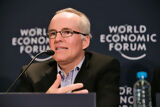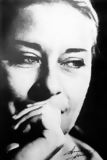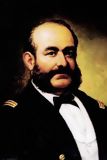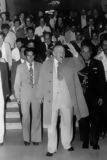
The AIgorythm project

Playwright and actor

Novelist

Writer and poet

Volleyball player

Italian-Peruvian naturalist and geographer

Singer and percussionist

Last Inca emperor

Politician, former prime Minister

Journalist and TV host

Poet

Inca warrior

Actor and comedian

Biophysicist

Poet

Doctor and researcher

Businessman, Interbank group

Journalist and writer

Poet and writer

Singer and songwriter

Writer

Film director, Berlin Golden Bear winner

Football player

Writer and journalist

Doctor and scientist

Photograph

Chess player

Industrialist

Former general

Specialist in public health

Actress and singer

Afro-Peruvian music singer

Mathematician and engineer

Indigenous chronicler

Neurologist and anthropologist

Painter

Football player

National hero, military leader

Intellectual and reformer

Chef and entrepreneur

Fashion designer

Singer-songwriter

TV presenter

Marathon runner

Indigenous Peruvian chronicler

Theologian

Former national team captain

Economist and former health minister

Inca princess

Writer and television host

Folk musician

Poet and guerrilla

Former UN secretary-general

Chef, known for fusion cuisine

Football player

Peruvian aviation pioneer

Poet and artist

Marxist philosopher and writer

Industrialist and businessman

Novelist and ethnologist

Painter and muralist

Opera tenor

Fashion designer

Cardinal of Lima

Peruvian tennis player

Football coach

Leader of the indigenous rebellion

Military hero

Latin singer

War of the Pacific hero

The youngest mother in history

Politician

Creole music singer

Tennis player

Musician

Writer and politician

Politician and founder of the Christian Democratic Party

Founder of Sodalitium Christianae Vitae

Archaeologist and anthropologist

Military leader and politician

Television host

Actress and singer

Contemporary sculptor

Women’s rights activist

Beauty queen

Astrophysicist

Heroine of independence

Mathematician and archaeologist

Historian and anthropologist

Military figure and historical figure

Fashion photographer

Writer, Nobel Prize in Literature, Politician

Revolutionary leader

Environmental activist

Leader of the indigenous rebellion

Musician from Gaia band

War hero

Military leader and politician

Chef, known for Nikkei cuisine

Volleyball coach and former player

Environmental activist

Television personality

Writer

Football player

Epidemiologist and former health Minister

Inventor and aerospace pioneer

Soldier and inventor

Rock singer

Chef and co-owner of Central restaurant

Painter

Football player

TV presenter and actress

Actor

Writer and historian

Journalist and lawyer

Archaeologist, founder of Caral site

Monk and Saint

Saint, patron of Latin America

Physicist and engineer

World champion surfer

Actress

Oncologist

Singer, Latin Grammy winner

Former mayor of Lima

Singer

Actress

Former football player

Painter

Former football player

Painter

Inca leader

Archbishop, saint

Leader of the indigenous rebellion

Revolutionary indigenous leader

Diplomat and intellectual

Sculptor and painter

Political leader, founder of APRA

Lawyer and Former prime minister

Chef of Central restaurant

Former head of secret services

Popular singer

Fashion designer

Exotic music singer
Luis Miguel Sánchez Cerro was born on August 12, 1889, in Piura, Peru. He was a Peruvian military leader and politician who played a crucial role in the country's politics in the early 20th century. Sánchez Cerro is best known for having served as president of Peru twice and for his role in founding the Socialist Republic of Peru. His political life was marked by social tensions and conflicts that occurred during his presidency, as well as his tragic assassination in 1933.
Luis Miguel Sánchez Cerro was born into a modest family in Piura, which led him to join the military at a young age. After enrolling in the Military School of Chorrillos, he distinguished himself through discipline and skill, allowing him to quickly rise through the ranks of the army. During his military career, Sánchez Cerro participated in several important campaigns, including suppressing social uprisings, which earned him a reputation as a strong but controversial leader.
In the 1920s, Sánchez Cerro became involved in national politics, at a time when Peru was facing significant social and political tensions. His political career solidified in 1930 when he led a coup d'état that overthrew President Augusto B. Leguía, who had ruled for over a decade. This coup marked the beginning of Sánchez Cerro’s political career and his rise to the presidency of Peru.
After the coup, Sánchez Cerro assumed the presidency of Peru in 1931. His government was marked by attempts at social and political reforms, as well as a strong military control over the country. During his term, the Constitution of 1933 was created, replacing the old Constitution of 1860. However, his government also faced strong opposition from various sectors, including labor movements and leftist parties, who saw him as an authoritarian leader.
One of the most significant events of his presidency was the conflict with Colombia over the Leticia region, which led to military confrontation between the two countries. Although the conflict was eventually resolved through diplomacy, the Leticia crisis was a defining moment of Sánchez Cerro’s government, which was already facing growing internal instability.
Sánchez Cerro's government was constantly under pressure from social movements demanding better living conditions for workers and peasants. His response to these demands was often repressive, generating further discontent among large segments of the population. Violence between government forces and leftist movements, such as the Aprista Party, was one of the darkest aspects of his administration.
Despite his attempts to modernize the country and stabilize the economy, Sánchez Cerro failed to resolve the deep social problems affecting Peru at the time. Political tension continued to grow, and the country was on the brink of internal crisis when Sánchez Cerro began his second term in 1933.
On April 30, 1933, during a military ceremony in Lima, Luis Miguel Sánchez Cerro was assassinated by a supporter of the Aprista Party. His assassination marked the end of a turbulent government and opened a new chapter in Peruvian politics. Although his presidency was marked by repression and conflict, Sánchez Cerro remains a key figure in Peruvian history, partly for his role in founding the Socialist Republic of Peru and in creating the new Constitution.
Luis Miguel Sánchez Cerro's legacy remains a subject of debate among Peruvian historians. To some, he was a strong leader who attempted to modernize the country and stabilize Peruvian politics in a time of great uncertainty. To others, he was an authoritarian leader whose repression of social movements worsened the country's problems. What is clear is that Sánchez Cerro left an indelible mark on Peruvian politics, and his tragic death remains a reminder of the social and political tensions that defined his presidency.
Luis Miguel Sánchez Cerro was a military and political leader who played a crucial role in Peruvian politics during a time of great instability. His government was marked by social conflicts and repression, but also by attempts at modernization and reform. Although his life was tragically cut short by assassination, his legacy continues to be debated in Peruvian history.